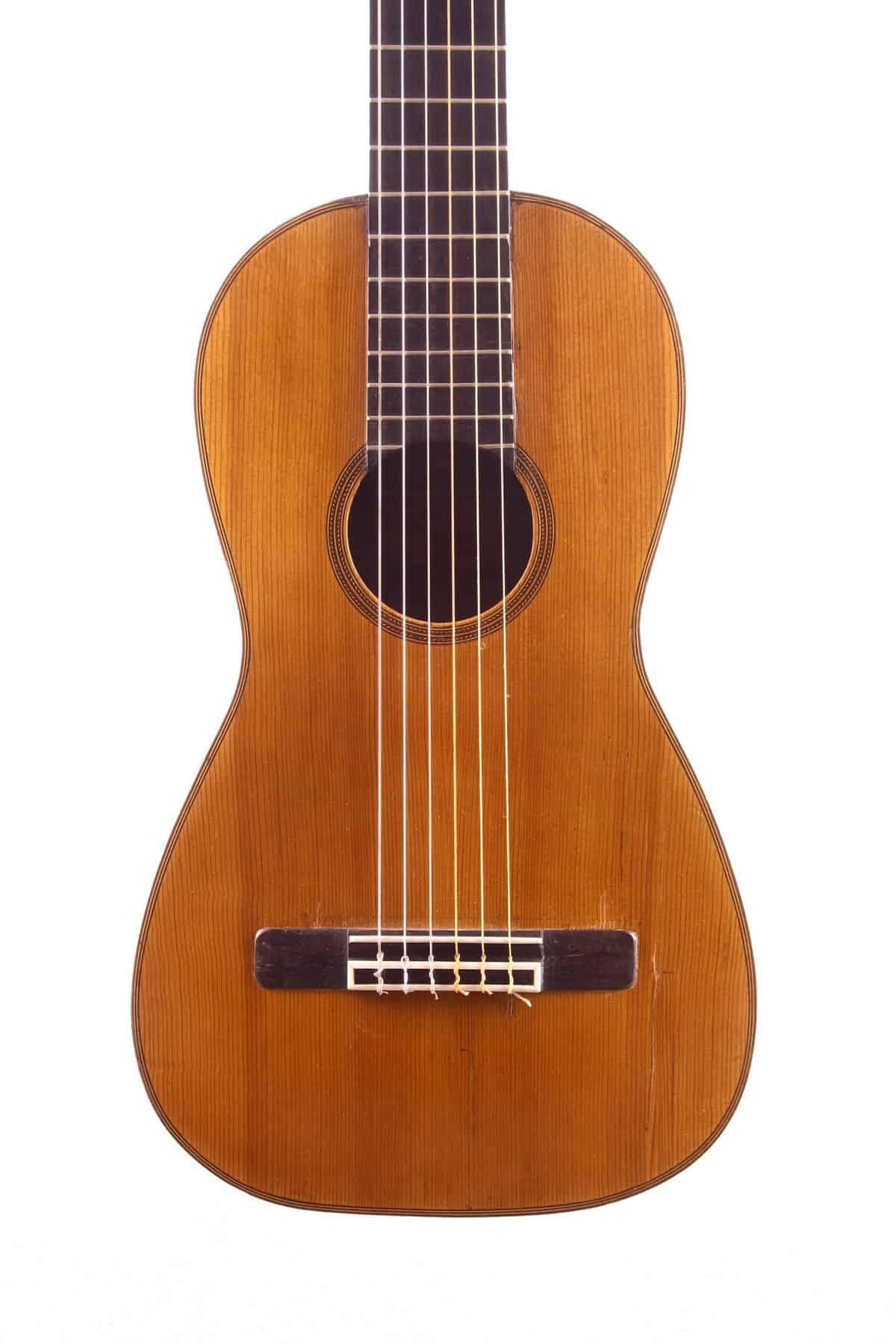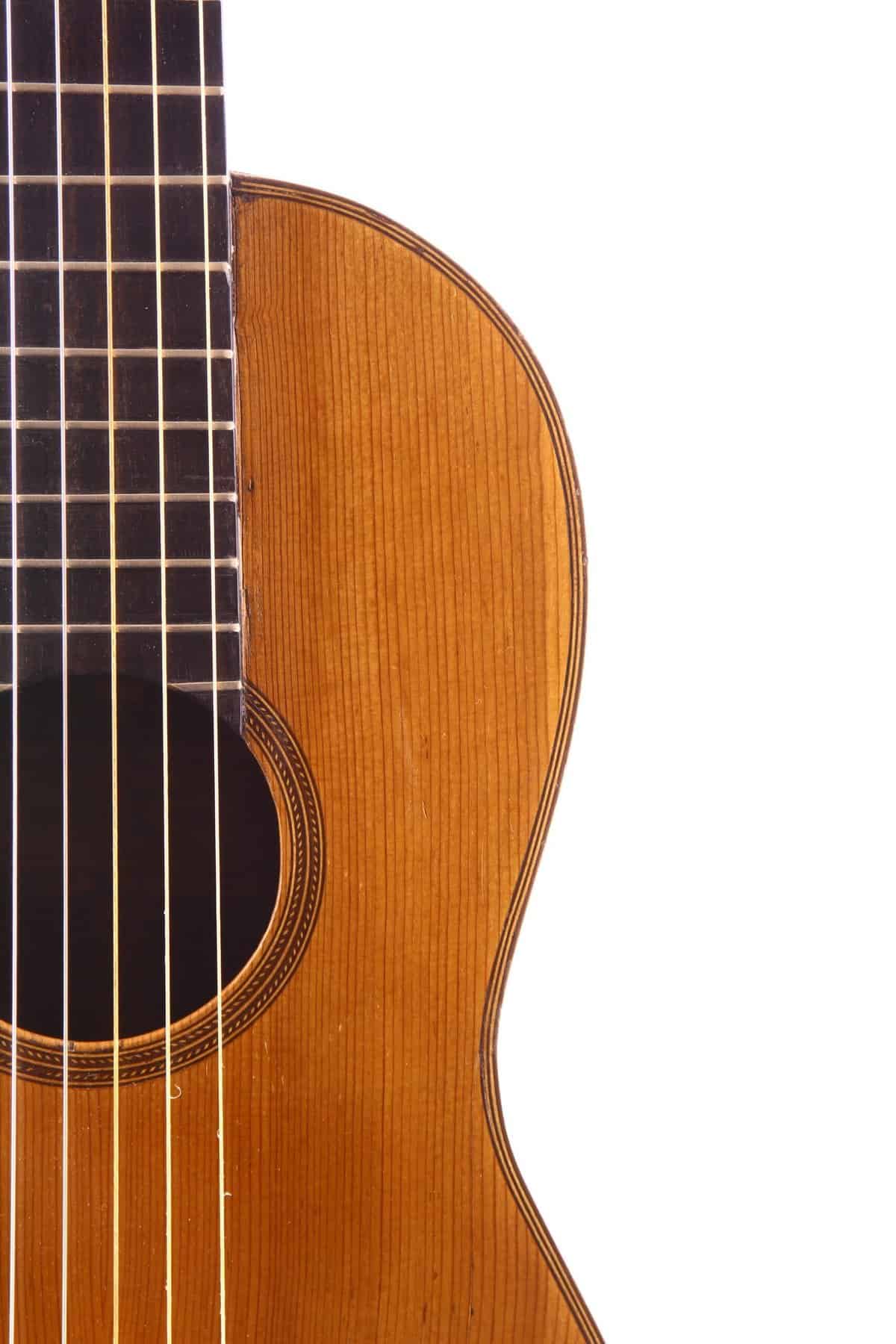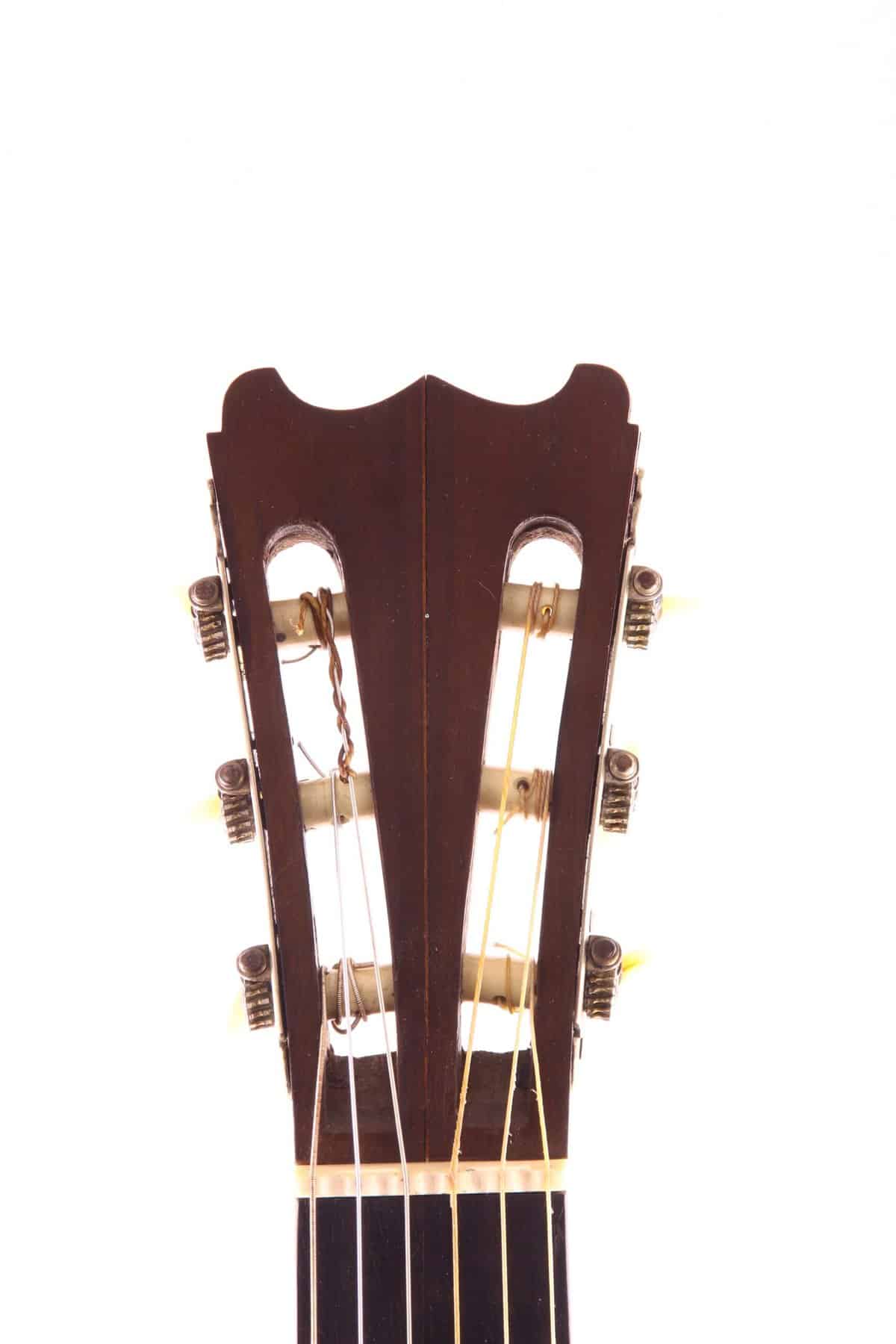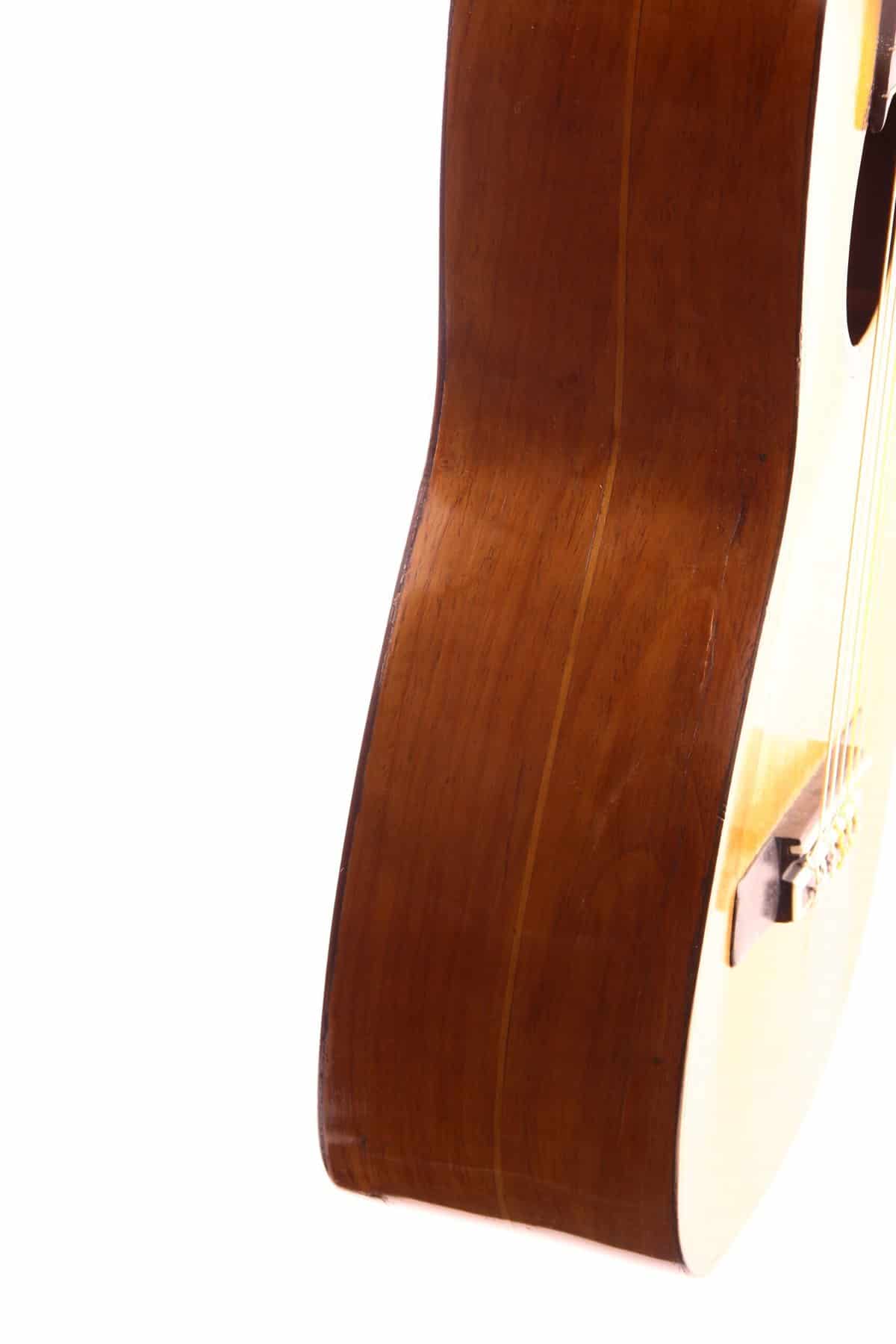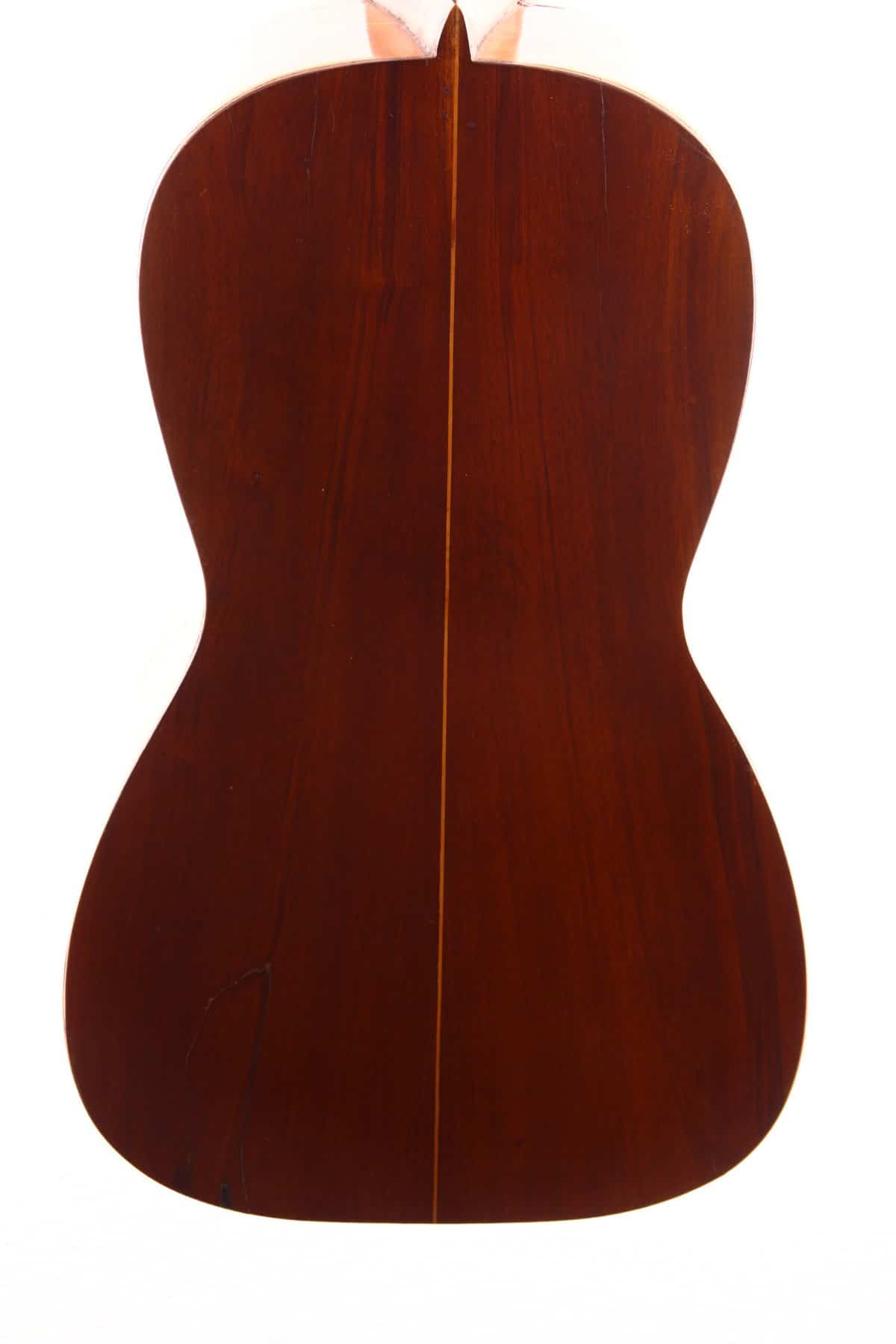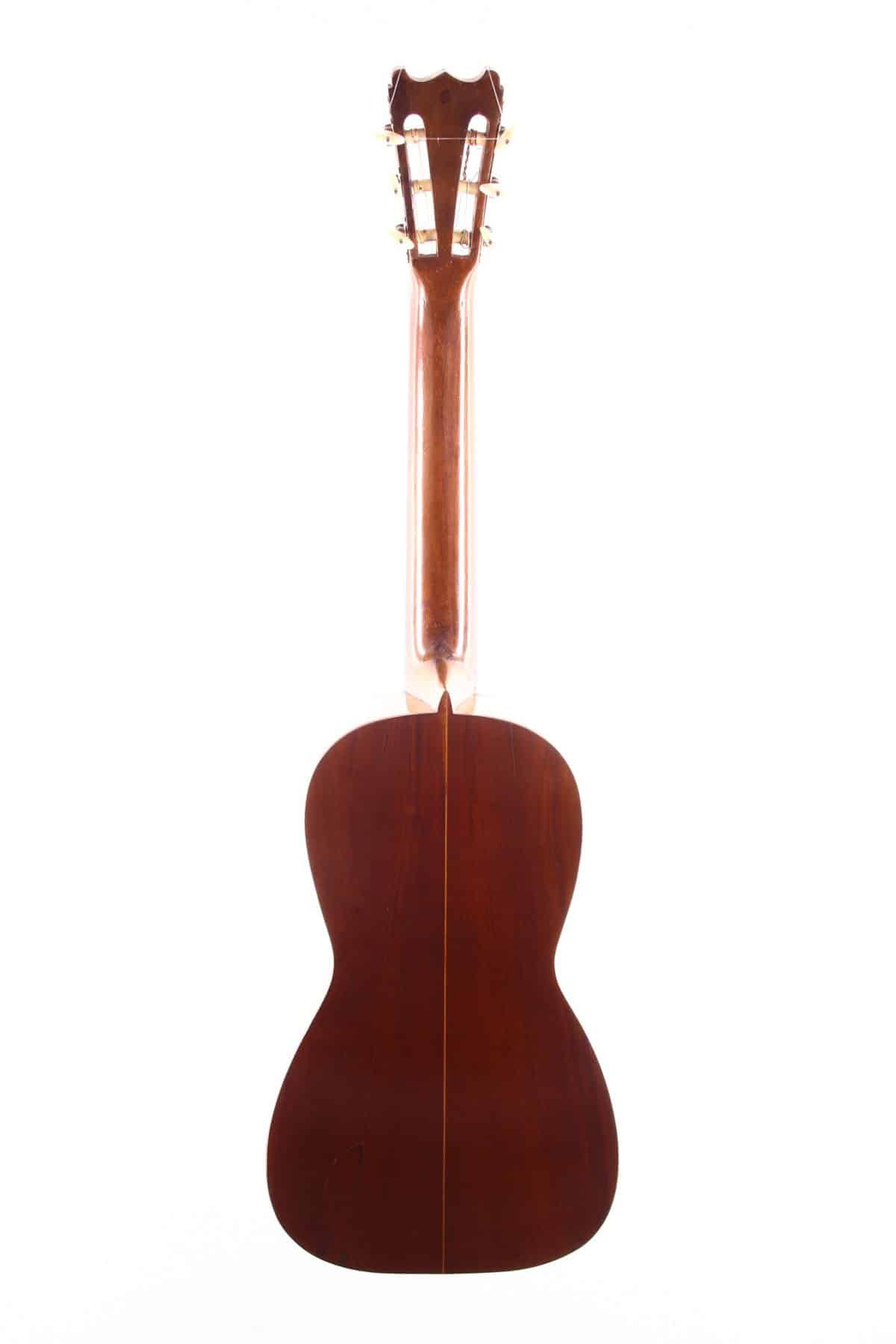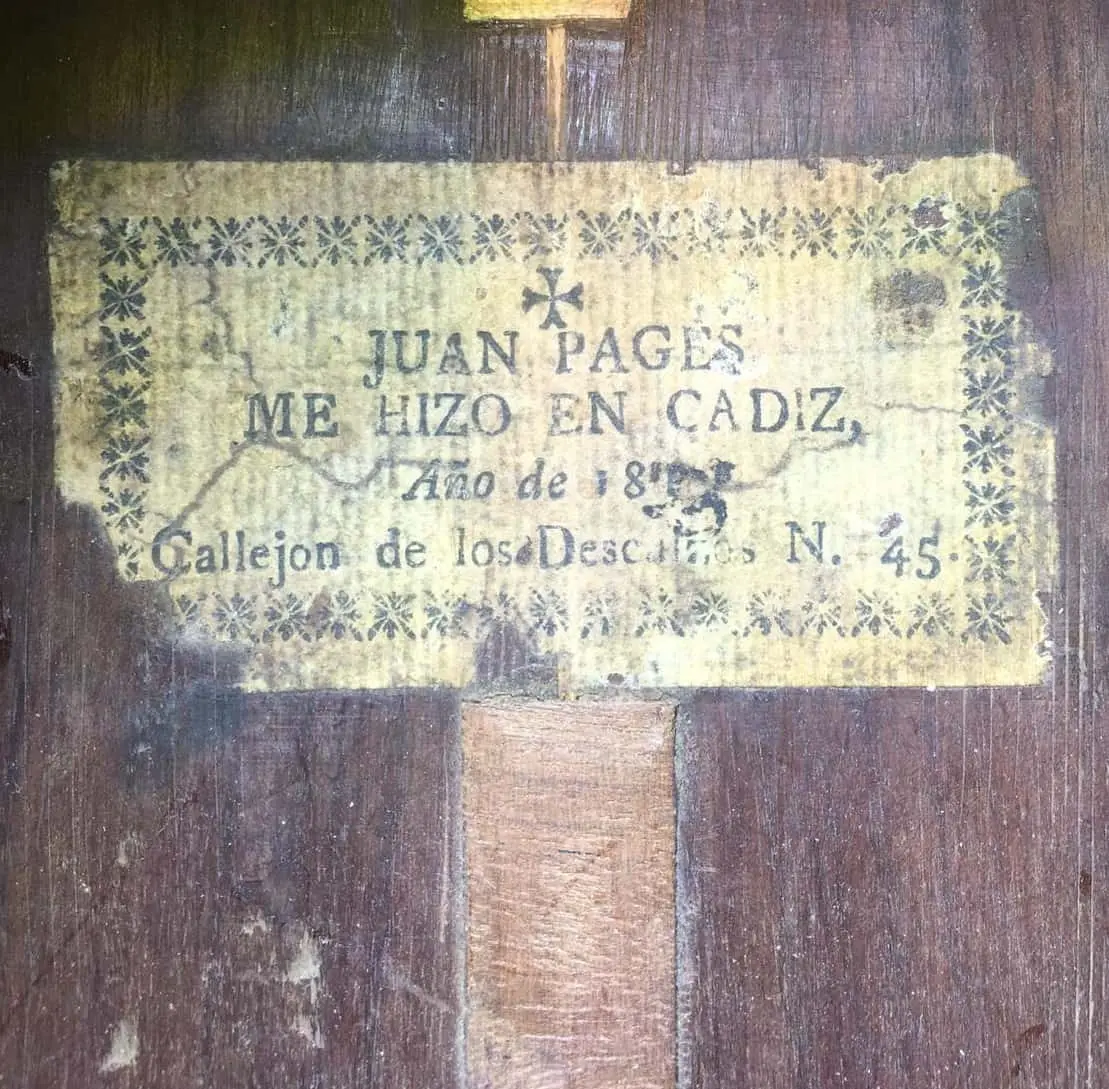Description
Juan Pagés, brother of José (Josef) Pagés, was born in Ecija, Sevilla.
He was a leading member of the Cádiz school. Juan and his brother José also were among those who first were developing fan bracing. Starting with systems of three braces, like the early guitars of Sanguino and Benedid, his later instruments used five.
The great Spanish composer and guitarist Fernando Sor thought highly of Pagés’s guitars, stating ‘The guitars to which I have always given preference are those of Alonso of Madrid, Pagés and Benediz of Cádiz, Joseph and Manuel Martinez of Malaga …
The Pagés are also mention by the composer Dionisio Aguado has among the makers he would recommend.
Juan and José Pagés guitars later on greatly influenced Louis Panormo, who used similar fan strutting designs and similar proportions for the body of the guitar.
This great example of a guitar was made in 1813. It is built as light as a feather and is perfectly worked out in every detail.
This gives it a resonance of a great romantic guitar. It has a very fast response and can be surprisingly loud. At the same time it retains a wide range of beautiful timbres in all registers.
Truely an impressive masterpiece.
Originally this guitar has been a 12-string (double course) instrument. During the turn of the century these were not popular anymore and as many instruments also this one has been converted to a 6-string guitar. The headstock has been adjusted and the guitar received a new fretboard and a new bridge. All cracks have been repaired and in all this care has been taken to keep the sound and playability at the highest level.
The scale length is 644 mm and the nut width 52 mm. It has a five fan bracing with a spruce top. The body looks like beeing made of some sort of rosewood.
It comes with an interesting case which was especially made for this guitar around the year 1900.


